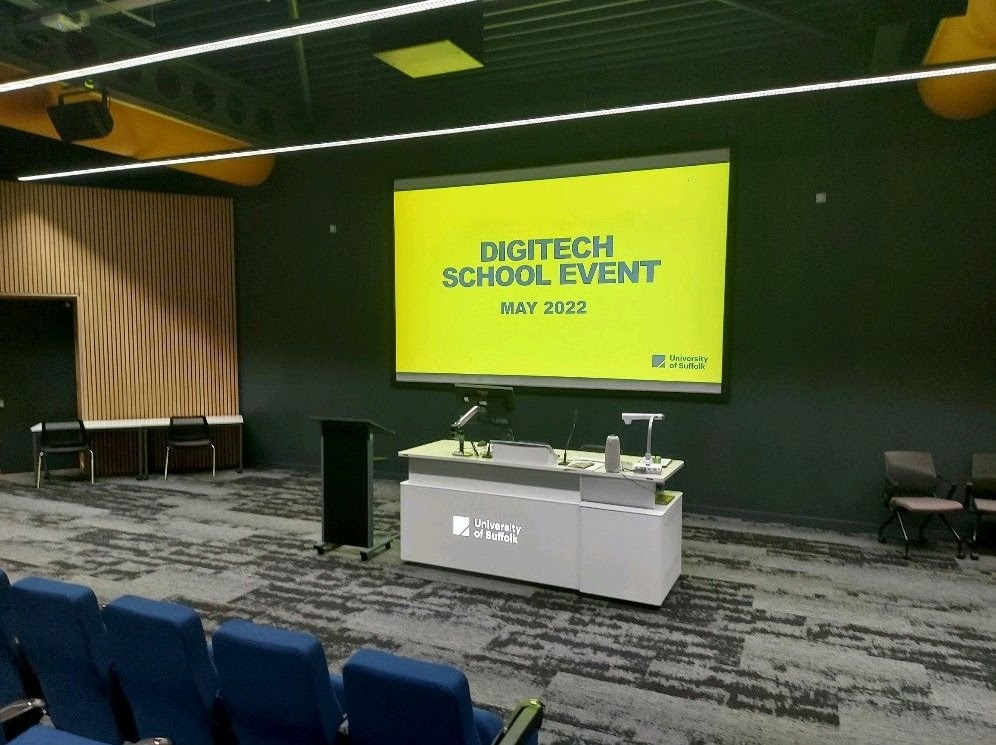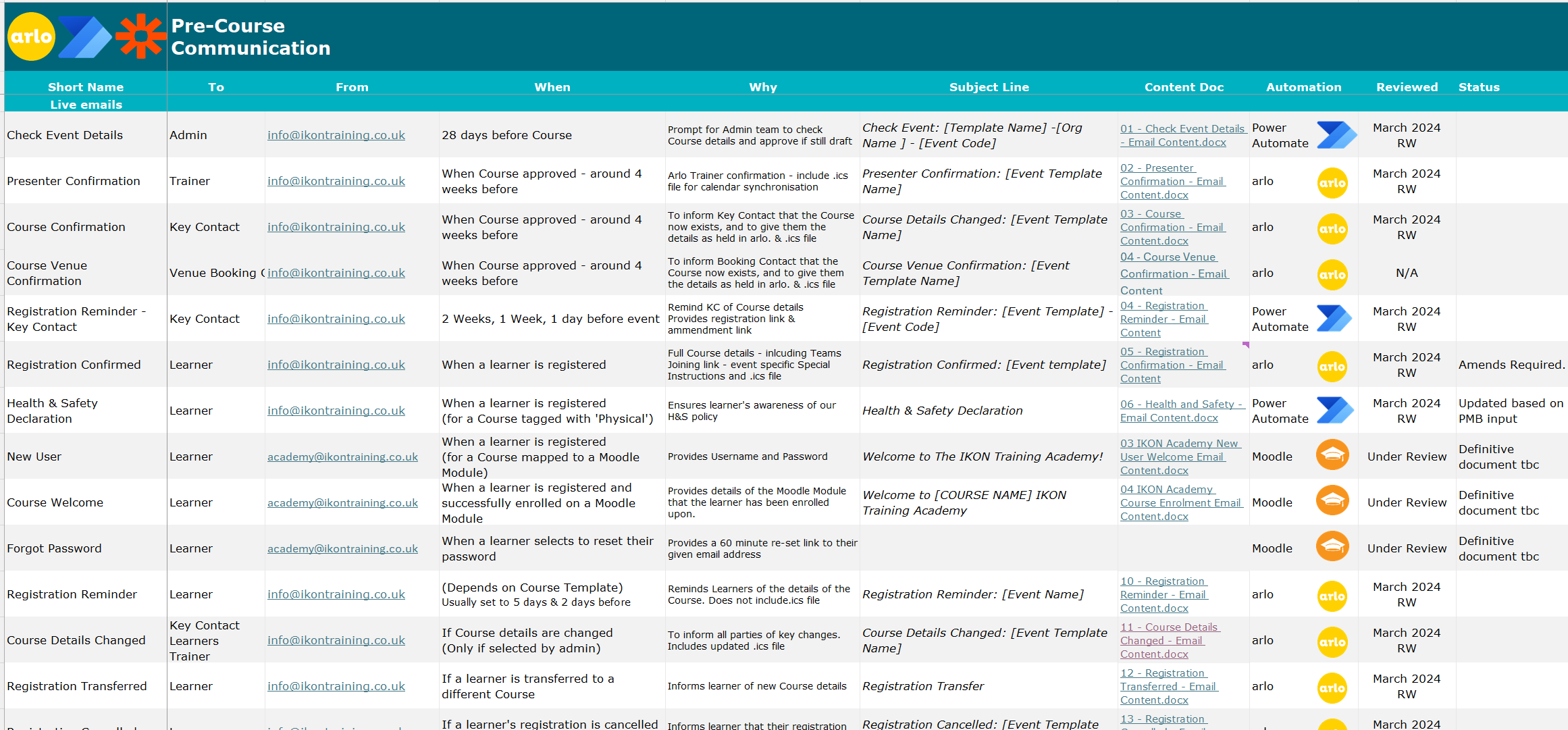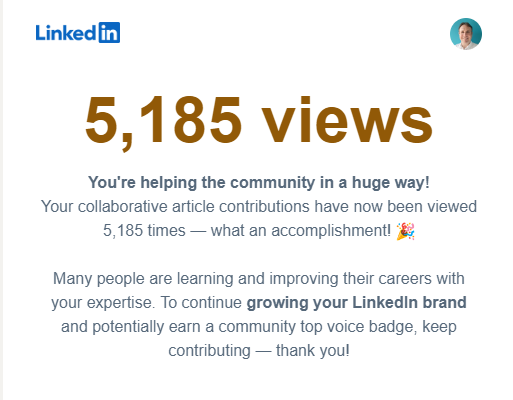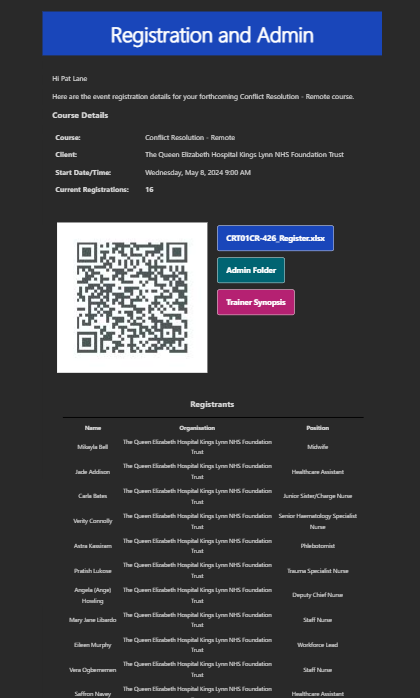Communication
Core Area 4: In this section, I share my experiences and strategies in collaborating and communicating effectively in the context of our eLearning initiatives.

Evidence of Communication and Collaboration
Image from an industry day event showcasing our collaborative efforts.
Collaborative Engagement in eLearning
At IKON Training, my role in the Empowering eLearning Plan required extensive collaboration and effective communication with various teams and stakeholders. This involved liaising with technical teams, instructional designers, and educators to ensure that our eLearning solutions were pedagogically sound and technologically robust.
Team Collaboration
I believe in collaboration and want to ensure that every voice is heard. I organise weekly catch-up meetings for those involved in the development of learning content. These sessions include brainstorming, as well as technical updates. It is important to foster a culture of shared responsibility and collective problem-solving. In a recent meeting, I presented how we could use the Kirkpatrick Phillips methods to gather more useful feedback in our surveys, to better calculate ROI. This led to the re-design of our end-of-module feedback survey, as well as additional questions within the forum, designed to capture people’s perceptions of behaviour change, a key facet of the Kirkpatrick Phillips methodology. I see this type of input as a key element of my role, where the pedagogy of learning overlaps with the potential expansion of the business. If we can evidence that our online learning materials are having a positive impact on people’s workplace behaviour, that will enable us to better position our learning offering to clients, while also meeting the needs of the learners – which is my ultimate goal.
Disseminating Best Practices
Part of my role involved disseminating the practices and learnings from our eLearning initiatives. I achieved this through internal presentations, training sessions, and contributing to institutional publications, sharing our successes and challenges to foster a community of continuous learning. I regularly contribute to help-articles on social media and have thousands of views for my contributions. I meet with professionals in the sector regularly to discuss the development of learning technologies and the challenges. I recently met with the Course Leader for Law at UoS, where we discussed the challenges and approaches around the use of Generative AI in assessment.
Effective Communication Strategies
Effective communication was key. I utilised various platforms and methods, from formal reports to informal chats, ensuring clear, concise, and consistent messaging. This approach helped in aligning the team’s objectives and maintaining a transparent and inclusive working environment.
I recently re-drafted the emails that are used within our communication strategy to ensure that they meet the needs of those receiving them. For example, the pre-course email that goes to trainers, with the information on how to register walk-in learners, is now much simpler, containing only those details required for the process. This was done in consultation with the trainers, to ensure that this important piece of communication was designed to meet their needs, and the roll-out of the new version was carefully change-managed to ensure that all those involved were well informed and engaged with the process.
Use of Plain English in Learning Resources: After years of teaching our youngest learners, and from my time working with people with autism, I really value the importance of clear and unambiguous language. I also think it is important that language can be easily understood by those with lower levels of literacy, and those for whom English is an additional language – like many of our learners.
Although some of the language I have implemented in emails and on the learning platform has been edited for marketing purposes, I have always tried to ensure that plain English is used wherever possible. For example, when creating our learning resources, I have made good use of HemingwayApp to gauge the reading level of the writing. Where I suspect a phrase may not translate well, I have run it through translation software to ensure that the meaning of the phrase is not lost, and where it could be ‘lost in translation’ I have edited the original.
Reflections on Collaborative Communication
Reflecting on these experiences, I value the power of collaboration and communication in achieving our eLearning goals. It has taught me the importance of diverse perspectives and the strength found in collective expertise, vital for the success of any educational technology initiative.
Reflecting on these experiences, I value the power of collaboration and communication in achieving our eLearning goals. It has taught me the importance of diverse perspectives and the strength found in collective expertise, vital for the success of any educational technology initiative.
One key reflection is the importance of aligning communication strategies with the specific needs and preferences of different stakeholders. Tailoring communication styles and methods to suit the audience, whether they are trainers, learners, or technical staff, has proven to be crucial in achieving clarity and engagement.
Another significant lesson is the value of continuous feedback loops. Regularly seeking and incorporating feedback from all involved parties has helped in refining our processes and ensuring that our communication is always relevant and effective. This iterative approach has been instrumental in fostering a culture of continuous improvement within our team.
Furthermore, the integration of technology in communication has been a game-changer. Utilizing tools like collaborative platforms, automated emails, and interactive content has not only streamlined our communication processes but also enhanced the overall engagement and satisfaction of our stakeholders.
In summary, effective communication and collaboration are the bedrock of successful eLearning initiatives. My experiences have underscored the need for strategic communication planning, adaptability, and leveraging technology to foster an inclusive and collaborative environment.
Testimonials
"Richard is a great guy to work with. He supported me in my face-to-face and online presentations as an Occasional Lecturer in Law at University of Suffolk. He has strong technical skills as well as interpersonal skills: a very powerful and effective combination."
"I had the pleasure of working with Richard during the University of Suffolk's DigiTech School Event. Richard assisted in leading the event ensuring that the day operated smoothly and that visitors (of which there was approx. 100), were comfortable and engaged throughout. With such a tight schedule for the day, Richard's support was incredibly valuable. It is clear that he has a strong passion for education, technology and supporting the next generation of learners."
"Richard provided wise, valuable and timely support to me and colleagues working in Suffolk Business School."
"It is my pleasure to recommend Richard Williams, an outstanding learning technologist with a robust teaching background. Richard's approachability, deep knowledge, and creativity made our collaboration on gamifying a pen-and-paper game for nursing education a truly rewarding experience. His talent and humbleness set him apart in the field. Richard is always available when needed, providing invaluable insights and support. His innovative ideas and dedication to enhancing educational experiences are remarkable. Richard is not only a pleasure to work with but also an essential asset to any team. I hope we will work together again soon."



